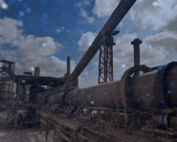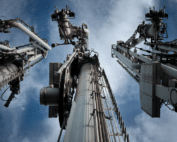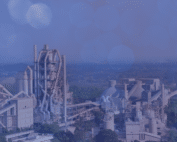HanAra’s parent company, BNF Technology, has been recognized for its support to Daejeon Combined Heat & Power Plant (DJCP) during its journey to becoming a smart plant. Using our data historian HanPrism and energy management system, DJCP quickly and easily analyzes real-time and historical data for improved operations.
Located in Daejeon, South Korea, DJCP provides steam, district cooling, and electricity to the surrounding community. It supports both industrial and residential customers by recycling landfill gas, biogas, and surplus heat to provide reliable and consistent district energy.
As a member of the Daejeon community, DJCP focuses on providing local and highly efficient energy and services. With the need to reduce both carbon emissions and the impact of increasing energy costs, DJCP surveyed their aging facilities and created a plan for innovative industrial operations.
Identified Challenges
Many organizations with legacy systems deal with various issues due to insufficient data access and analysis:
- Siloed DCS data: it was difficult to access real-time and historical data throughout the organization.
- Data productivity: it required additional time, energy, and resources to analyze data and generate necessary reports for collaboration and decision-making.
- Limited time: data access and analysis delays made it difficult to identify and rectify potential issues before they occurred.
Solution and Results
DJCP selected HanPrism as its big data platform to collect, store, and analyze large volumes of data. As a key building block of a smart plant, HanPrism enables organizations to view and share operational data throughout the organization. In addition, automatic reporting through HanAra Spreadsheet saves users time generating and sharing reports, improving work efficiency.
With improved insight into their current operations, DJCP has reduced greenhouse gases and excess vented steam. Members can now spend less time on data preparation and more time collaborating and improving production efficiency.
Best Practices
When replacing a legacy data management system or implementing a new system, consider the following:
- Employee engagement: include users throughout the organization during the entire process including the design phase. This will help with solution engagement but also provide needed perspectives on what will be required for a platform to fit and improve operations.
- Costs and benefits analysis: when evaluating a smart plant plan, analyze the costs and benefits to identify a sustainable and meaningful path forward. Costs include the price of the solution and hardware as well as continuing resource costs (e.g., training, maintenance, personnel). The benefits can be diverse and diffuse, including improved plant efficiency, worker productivity, and data storage.
- Digitalization opportunities: identify key areas of improvement after reviewing and surveying current processes and procedures. Examples include transitioning tasks and reports previously done on paper as well as providing real-time operation and management information on one screen for improved decision-making.
To download KOSMO’s (Korea Smart Manufacturing Office) article in Korean about DJCP’s journey, click here. With the help of HanPrism, members of DJCP now spend more time on areas of priority and less time on data access and data preparation.
HanAra Success Stories
Optimizing Cement KPIs with a Data Historian Implementation
The cement industry plays a vital role in the global economy. It provides essential building materials for infrastructure, housing, and commercial projects worldwide. According to the Global Cement and Concrete Association, global cement production [...]
Elevating an LNG Import Terminal with Advanced Data Historian Technology
LNG terminals face numerous risks and challenges in their daily operations. This includes the need to ensure the safe and efficient handling of LNG, maintain optimal storage conditions, and meet the growing demands of [...]
Sustainability and Efficiency in Cement Manufacturing: A HanPrism Case Study
The cement industry plays a vital role in the construction sector, but it must overcome the challenges of increasing sustainability demands, rising energy costs, and the need for operational efficiency for continued growth. To [...]



